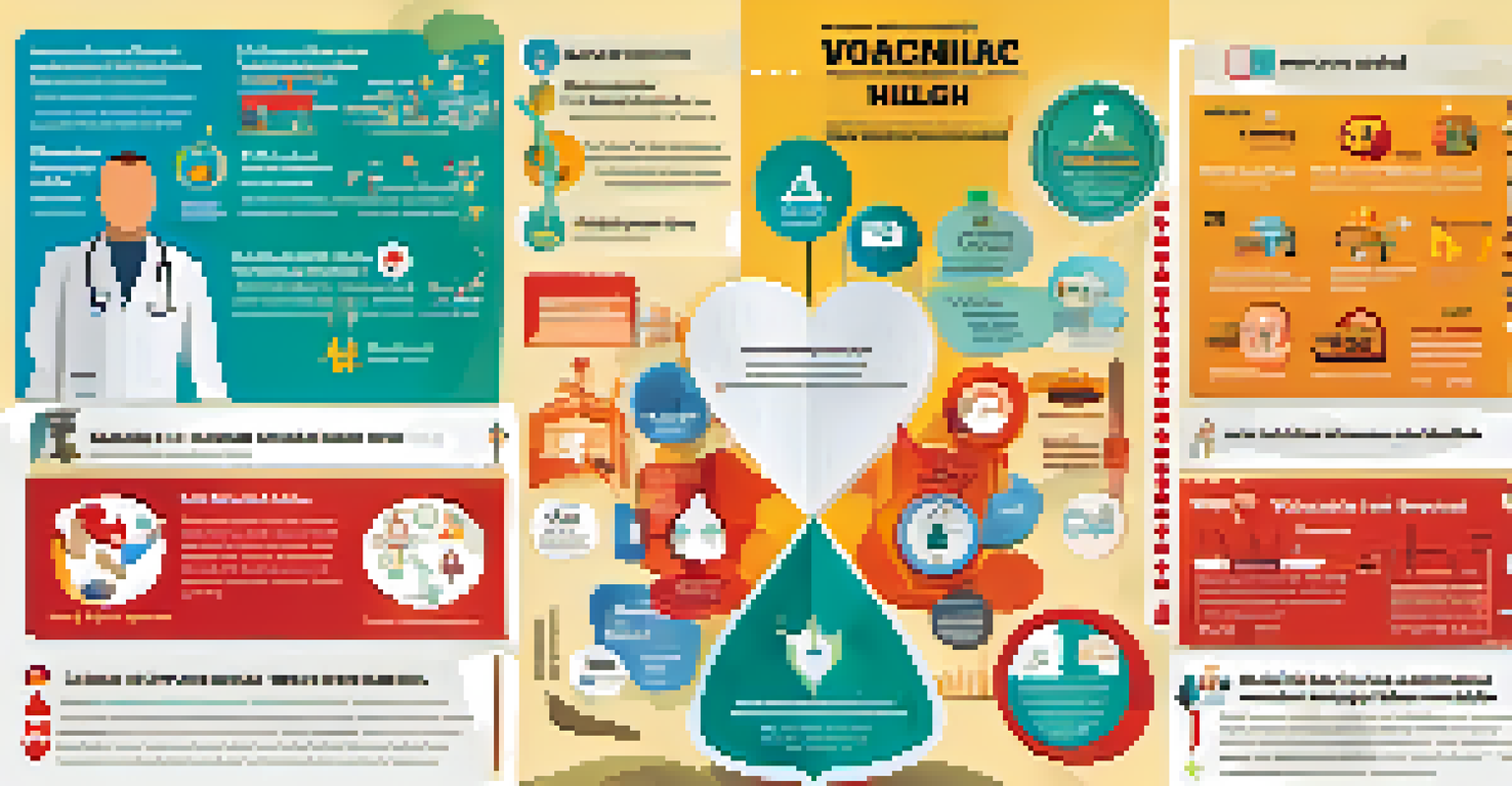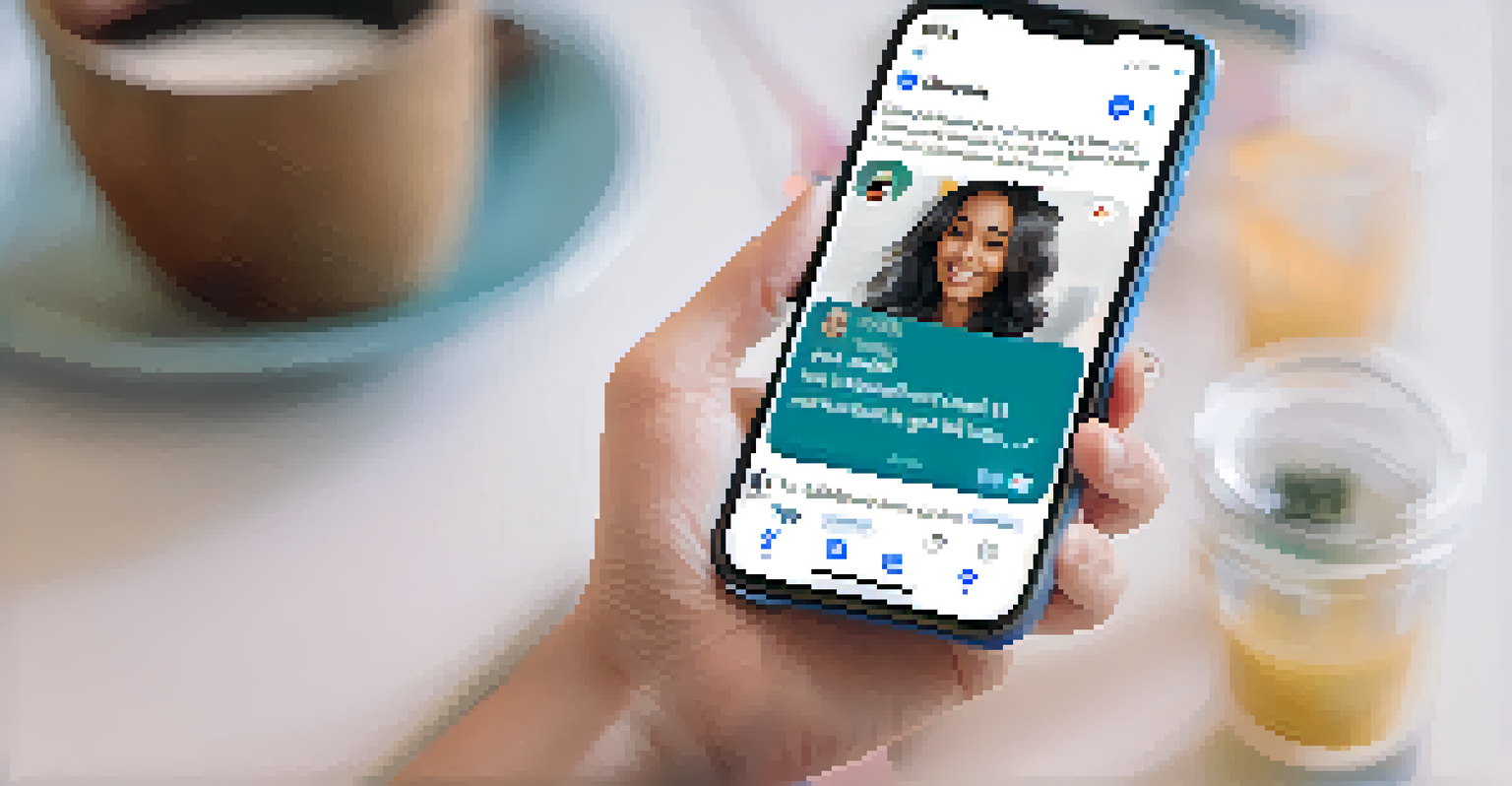The Role of Social Media in Public Health Campaigns Today

The Rise of Social Media in Public Health Awareness
In recent years, social media has become a powerful tool for public health awareness. Platforms like Facebook, Twitter, and Instagram allow health organizations to reach millions with just a few clicks. This immediacy helps to disseminate vital information quickly, especially during health crises. For example, during the COVID-19 pandemic, social media played a crucial role in sharing guidelines and updates.
Social media is not just a tool; it's a powerful platform for public health communication that can save lives.
Moreover, social media enables real-time interaction between health officials and the public. This two-way communication fosters a sense of community and trust, helping to dispel misinformation. Users can ask questions, share experiences, and receive support, making public health campaigns more relatable and effective.
The potential for virality on social media also amplifies health messages. A single post can reach a vast audience if shared widely, increasing the chances of engaging individuals who might not usually seek health information. This is why many campaigns now focus on creating shareable content that resonates with diverse audiences.
Engaging the Community Through Interactive Campaigns
Interactive campaigns are one of the standout features of social media's role in public health. By encouraging users to participate in challenges or share personal stories, these campaigns create a sense of ownership and responsibility. For example, the Ice Bucket Challenge raised awareness and funds for ALS research through user-generated videos.

These engaging strategies not only highlight important health messages but also build community. When individuals see their peers participating, they are more likely to join in. This peer influence can be particularly powerful in encouraging healthy behaviors and spreading awareness.
Social Media Boosts Health Awareness
Platforms like Facebook and Twitter rapidly disseminate vital health information and foster community interaction.
Additionally, interactive campaigns often use creative visuals and hashtags that make them memorable. This catchy branding helps cement the message in the public's mind, making it more likely that they'll remember and act on it later. Ultimately, these campaigns turn passive viewers into active participants.
Targeted Messaging for Diverse Audiences
One of the strengths of social media is its ability to segment audiences for targeted messaging. Public health campaigns can tailor their messages to specific demographics based on age, location, or interests. For instance, a campaign aimed at young adults might focus on topics like mental health or sexual health, using language and visuals that resonate with them.
In a world where misinformation spreads rapidly, the ability to communicate accurate health information through social media is more important than ever.
This targeted approach ensures that the right information reaches the right people at the right time. It can be especially beneficial for addressing health disparities within communities. By creating culturally relevant content, health organizations can better connect with underserved populations.
Moreover, social media analytics provide valuable insights into audience engagement. Campaigns can be adjusted in real-time based on feedback and performance metrics, allowing for a more dynamic approach to public health messaging. This adaptability is critical in a rapidly changing health landscape.
Combating Misinformation in Public Health
One of the significant challenges of using social media for public health is the spread of misinformation. False claims can easily gain traction, leading to confusion and fear among the public. To combat this, health organizations must actively monitor social media platforms and respond quickly to inaccuracies.
Fact-checking and providing clear, evidence-based information are essential strategies in this battle. For instance, during the pandemic, many health organizations launched campaigns specifically designed to debunk myths about COVID-19. By addressing false information directly, they helped to clarify the facts and reassure the public.
Engagement Through Interactive Campaigns
Interactive campaigns encourage user participation and create a sense of ownership, enhancing community involvement in health initiatives.
Additionally, collaboration with influencers and trusted figures can amplify accurate health messages. When respected voices share correct information, it can counteract misinformation effectively. This approach not only educates the public but also builds trust in health authorities.
The Role of Influencers in Health Campaigns
Influencers have emerged as key players in public health campaigns, particularly among younger audiences. These individuals often have dedicated followings that trust their opinions, making them effective messengers for health initiatives. For example, many influencers have used their platforms to promote vaccination and raise awareness about mental health issues.
By partnering with influencers, health organizations can leverage their reach and credibility. This strategy not only broadens the audience but also enhances the relatability of health messages. When an influencer shares a personal story or advocates for health practices, it often resonates more with their followers than traditional advertisements.
Moreover, influencer-led campaigns can create a sense of community and shared purpose. Followers feel connected not only to the influencer but also to the cause, motivating them to take action. This unique synergy between public health and influencer marketing can lead to more impactful campaigns.
The Importance of Visual Content in Health Campaigns
Visual content is crucial in capturing attention and conveying health messages effectively on social media. Infographics, videos, and eye-catching images can simplify complex health information and make it more digestible. For instance, a well-designed infographic can explain the benefits of vaccination in a way that words alone may not.
The use of visuals also enhances engagement, as posts with images are more likely to be shared and liked. This increased interaction helps to spread the message further and reach broader audiences. In a crowded social media landscape, standing out visually can be a game-changer for health campaigns.
Influencers Amplify Health Messaging
Partnering with influencers extends the reach and relatability of health campaigns, especially among younger audiences.
Additionally, storytelling through visuals can evoke emotions and foster connections. When people see images that reflect their experiences or challenges, they're more likely to feel a personal connection to the campaign. This emotional engagement can drive individuals to take action and advocate for their health.
Evaluating the Success of Social Media Health Campaigns
Evaluating the success of social media health campaigns is crucial for understanding their impact. Metrics such as engagement rates, shares, and comments provide insights into how well a campaign resonated with its audience. Health organizations can use these metrics to refine their strategies for future campaigns.
Surveys and feedback from the community can also offer valuable qualitative data. Understanding the audience's perceptions and behaviors can help organizations gauge the effectiveness of their messaging. For example, a post that generates conversations might indicate that the topic resonates deeply, whereas a lack of engagement could signal a need for a different approach.

Ultimately, continuous evaluation allows for improvement and adaptation in the ever-changing landscape of public health. By analyzing what works and what doesn't, organizations can create more effective campaigns that meet the needs of their communities.